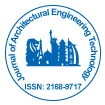Architectural Drawing: The Blueprint of Built Environments
Received Date: Mar 01, 2025 / Accepted Date: Mar 31, 2025 / Published Date: Mar 31, 2025
Abstract
Architectural drawing serves as the fundamental visual language through which ideas, concepts, and technical specifications are communicated in the discipline of architecture. Far from being mere illustrations, these drawings are instrumental tools that bridge the abstract realm of design with the tangible reality of construction. This paper explores the multifaceted role of architectural drawings in shaping the built environment, emphasizing their historical evolution, functional diversity, and contemporary significance in both educational and professional contexts. It traces the development of architectural representation from hand-drawn plans of antiquity to the sophisticated computeraided design (CAD) and building information modeling (BIM) systems of the present day. By examining different types of architectural drawings such as plans, sections, elevations, perspectives, and detail drawings this work underscores how each format fulfills a specific communicative function in the architectural process. Moreover, it delves into the interpretative role that these drawings play for various stakeholders, including architects, engineers, contractors, clients, and the public. The paper also critiques the limitations of traditional two-dimensional representation and highlights the growing relevance of digital and three-dimensional visualization tools that enhance spatial understanding and collaboration. Ultimately, architectural drawing is positioned not only as a technical instrument but as a medium of ideation, narrative, and cultural expression. Understanding this dynamic function allows for a deeper appreciation of how the built environment is envisioned, negotiated, and realized.
Citation: Arjun M (2025) Architectural Drawing: The Blueprint of Built Environments.J Archit Eng Tech 14: 442
Copyright: © 2025 Arjun M. This is an open-access article distributed under theterms of the Creative Commons Attribution License, which permits unrestricteduse, distribution, and reproduction in any medium, provided the original author andsource are credited.
Select your language of interest to view the total content in your interested language
Share This Article
Recommended Journals
Open Access Journals
Article Usage
- Total views: 360
- [From(publication date): 0-0 - Dec 09, 2025]
- Breakdown by view type
- HTML page views: 279
- PDF downloads: 81
